How many jazz musicians from the 1920s were involved in playing modern jazz of the 1960s? I can only think of three: Duke Ellington (who, in addition to his writing, greatly modernized his piano style through the decades), Mary Lou Williams, and Coleman Hawkins. In Hawkins’ case, he was certainly the only musician to play with Mamie Smith’s Jazz Hounds and Abbey Lincoln, not to mention McKinney’s Cotton Pickers and Thelonious Monk.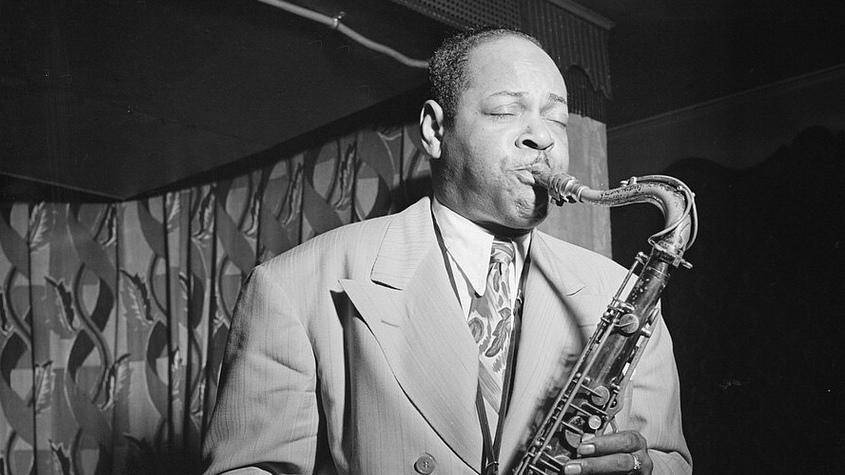
Most jazz artists develop their sound and style early on and spend much of their career perfecting their ideas. They gradually evolve but do not change all that much through the years. Hawkins (like Miles Davis and John Coltrane) was a major exception. He was eternally modern while retaining his easily identifiable sound.
Early Years
Coleman Hawkins was born Nov. 21, 1904 in St. Joseph, Missouri. He played piano and cello as a child and was always a fan of classical music, but the time he was nine, he was improvising on tenor-sax. It is fair to say that he had no musical role models on tenor since the instrument was barely used in any type of music at the time. Hawkins was playing in public by 1916 and was a professional by the time he was 16 in 1920. After working locally in Kansas City, Hawkins became a member of Mamie Smith’s group (1921-23).
He made his recording debut with the blues singer including appearing on a few instrumentals by the band. At the time, other than Isham Jones (who appeared with his own group), there were virtually no significant tenor-saxophonists in jazz. While the alto and C-melody saxophone were sometimes used as a lead instrument and Sidney Bechet was quickly developing on soprano, the tenor was thought of as a poor substitute for a trombone. It was usually played with an emphasis on percussive effects and slap-tonguing. Hawkins’ early playing sometimes was in that vein, but he had plenty of time to grow.
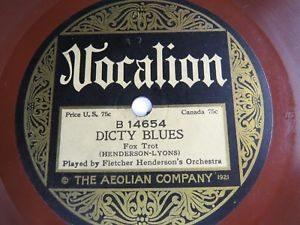
First Records
After leaving Smith in 1923, Hawkins made his first recordings with Fletcher Henderson, becoming a member of Henderson’s big band in 1924 and staying for a decade. While the musicians in the band took pride in their sight-reading abilities and general musicianship, the staccato phrasing, overcomplicated Don Redman arrangements, and emphasis on effects kept them from swinging.
That changed with the arrival of Louis Armstrong from Chicago in the fall of 1924. Armstrong used silence dramatically, perfectly placed his notes, made every sound count, and told a story when he soloed. Hawkins listened closely, as did Redman, and within a few months he had moved five years ahead in his phrasing and ideas. On May 14, 1926 during “The Stampede,” Hawkins created the first major tenor-sax solo on record, a statement that influenced many young musicians including trumpeter Roy Eldridge who memorized and duplicated the solo.
While Hawkins had reluctantly played clarinet, baritone sax, and bass sax on some early recordings, by 1927 he was heard exclusively on tenor and was thought of as one of the young giants of jazz. His big tone, rhythmic style, and mastery of harmony were so dominant that it would be a decade before any other tenor (other than Bud Freeman) emerged with a different sound. Ben Webster and Chu Berry were just two of the younger tenors who used the Hawkins style as a way of developing their own identity.
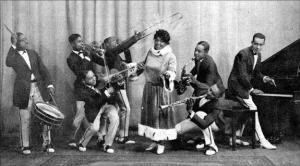
Hawkins was one of Henderson’s star soloists through 1934, also appearing on records backing blues singers (including Bessie Smith and Ma Rainey) and with Clarence Williams, McKinney’s Cotton Pickers, the Mound City Blue Blowers (making a classic ballad statement on “One Hour” in 1929), the Chocolate Dandies, Henry “Red” Allen, Spike Hughes, and Benny Goodman (featured on “Oh Pappy”). In 1933 the increasingly restless Hawkins led his first of many record sessions.
Frustrated by Henderson’s lack of interest in promoting his own band and the orchestra’s lack of progress compared to other groups, Hawkins sent a telegram to British bandleader Jack Hylton, asking for a job. The surprised Hylton said yes, and Hawkins’ decade with Henderson came to an end.
After Henderson
During 1934-39 the tenor-saxophonist lived and worked in Europe where he felt as if he was being treated like visiting royalty. He recorded regularly and in a wide variety of settings ranging from duets with pianist Freddy Johnson to sets in the Netherlands with the Ramblers, in Paris with Michel Warlop’s Orchestra, in Switzerland with the Berries, and with an all-star band in Paris that included Django Reinhardt, Stephane Grappelli, altoists Benny Carter and Andre Ekyan, and fellow tenor Alix Combelle. “Honeysuckle Rose” and “Crazy Rhythm” from the latter session are exciting classics.
With war clouds looming, Hawkins reluctantly left Europe in 1939 to return to New York. During the period that Hawkins was overseas, Lester Young with Count Basie’s orchestra had emerged from Kansas City with a completely different sound on the tenor. Young had a lighter-than-air tone and, while simpler harmonically, his floating solos and cooler tone offered an alternative way to play the tenor. In fact, when he played it did not even sound like the same instrument that Hawkins used.
Evolution
Coleman Hawkins may have been in danger of being written off by some as an old-fashioned relic from a past era, but he was prepared, having continued his evolution in Europe. In the U.S. he went to jam sessions (including engaging in tenor battles with Young), listened closely, and emerged triumphant.
Hawkins formed his own big band and, on its first record date, he created a classic improvisation on “Body And Soul” (just two solo choruses that barely referred to the melody) that to everyone’s surprise (including his) became a hit record. While the Coleman Hawkins Big Band did not last a year, he became a fixture leading combos on New York’s 52nd Street. His recordings during 1941-46 include many classics including versions of “The Sheik Of Araby,” “My Ideal,” and “The Man I Love,” the latter in a quartet with pianist Eddie Heywood.
The rise of bebop caused Hawkins no worry because harmonically he was already there. He delighted in hiring young up-and-coming talents for his bands. For two recording sessions in 1944 which are considered the earliest bop sessions, he put together a large group that included trumpeter Dizzy Gillespie (who was just beginning to be heard), fellow tenor Don Byas, bassist Oscar Pettiford and drummer Max Roach. The songs they recorded include his “Disorder At The Border,” Gillespie’s “Woody’n You,” and “Rainbow Mist” (based on “Body And Soul”).
Later that year, Hawkins led a quartet that made a record date and featured the young pianist Thelonious Monk. While he continued playing with swing veterans (including trumpeters Roy Eldridge, Buck Clayton, and Charlie Shavers), toured with Jazz At The Philharmonic, and even appeared at the Esquire All-American Awards concert with Louis Armstrong, Hawkins enjoyed playing more modern styles of jazz.
He took a sextet to California in 1945 that included Pettiford and trumpeter Howard McGhee (“Stuffy” and “Rifftide” were among their recordings) and various sessions featured trumpeters Miles Davis and Fats Navarro, and trombonist J.J. Johnson. What other 1920s veteran could sound comfortable playing the complex “Half Step Down, Please?” And in 1948, Hawkins recorded the first full-length unaccompanied tenor solo, “Picasso.”
Despite all of this, the veteran tenor’s influence on younger players was overshadowed by Lester Young’s cooler approach. Hawkins’ style was considered by some to be out-of-style in the early-to-mid 1950s although he continued working and recording, touring Europe during part of 1949-50, recording “Ballade” with Charlie Parker, appearing on some of Buck Clayton’s famed jam session records, and making albums with strings and specially-assembled big bands.
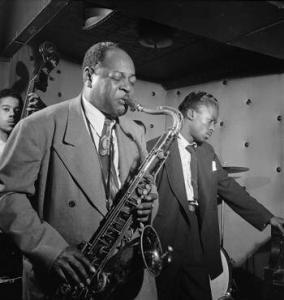 The Hawk Flies High
The Hawk Flies High
For Coleman Hawkins, 1957 was a “comeback” year even though he had never stopped playing or growing. Still just 52 as the year began, he recorded the excellent The Hawk Flies High with young modernists, was a strong asset on a rollicking album led by Red Allen, and was on a Thelonious Monk record in which he shared the tenor duties with John Coltrane (both solo on “Well You Needn’t”).
In addition, Hawkins recorded an album with Dizzy Gillespie, jammed with Roy Eldridge at an exciting (and recorded) set at the Newport Jazz Festival, was one of the guests on an edition of the televised Nat King Cole Show, recorded a full record with pianist Oscar Peterson, shared an album with Ben Webster, and was part of a Fletcher Henderson reunion project. Hawkins topped off the memorable year by being one of the stars of the classic Sound Of Jazz telecast during which he played with Red Allen, Count Basie, and Billie Holiday.
Considered a living legend, Hawkins had eight more great playing years left. He led his own groups which frequently teamed him with Roy Eldridge, appearing at many festivals, clubs and occasionally overseas. He co-led sessions with guitarist Tiny Grimes, vibraphonist Milt Jackson, and flugelhornist Clark Terry, played vintage music with clarinetist Pee Wee Russell and blues singer Ida Cox, was on Benny Carter’s famous Further Definitions album, made a record date with Duke Ellington and some of his sidemen, and recorded current show tunes.
He also was featured on modern originals with pianist Randy Weston, drummer Max Roach (including “The Freedom Now Suite”), Abbey Lincoln, and Sonny Rollins, who always considered Hawkins his main inspiration. The Rollins album ended up being an avant-garde record with Rollins doing his best to outwit his idol. Hawkins even made a bossa-nova album (Desafinado) in 1962. As 1965 began, Coleman Hawkins looked ageless and gave one the impression that he would always be a major part of the jazz scene.
The End
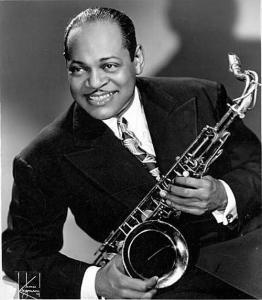 But 1965 was his last hurrah. By the end of the year for reasons that are unknown (possibly having to do with senility), Hawkins lost most of his interest in eating, began drinking excessively, and no longer seemed to care about his appearance which formerly had been flawless and distinguished. His last studio album, Sirius (from late 1966), finds him often sounding short of breath. He became thinner and weaker as time went on and his last few concert appearances were rather sad. It all ended on May 19, 1969 when he passed away at the age of 64.
But 1965 was his last hurrah. By the end of the year for reasons that are unknown (possibly having to do with senility), Hawkins lost most of his interest in eating, began drinking excessively, and no longer seemed to care about his appearance which formerly had been flawless and distinguished. His last studio album, Sirius (from late 1966), finds him often sounding short of breath. He became thinner and weaker as time went on and his last few concert appearances were rather sad. It all ended on May 19, 1969 when he passed away at the age of 64.
But it had been quite a ride. One can trace the history of jazz during 1921-65 through the recordings of Coleman Hawkins, and he left behind quite a legacy of timeless and always-modern music.
Since 1975 Scott Yanow has been a regular reviewer of albums in many jazz styles. He has written for many jazz and arts magazines, including JazzTimes, Jazziz, Down Beat, Cadence, CODA, and the Los Angeles Jazz Scene, and was the jazz editor for Record Review. He has written an in-depth biography on Dizzy Gillespie for AllMusic.com. He has authored 11 books on jazz, over 900 liner notes for CDs and over 20,000 reviews of jazz recordings.
Yanow was a contributor to and co-editor of the third edition of the All Music Guide to Jazz. He continues to write for Downbeat, Jazziz, the Los Angeles Jazz Scene, the Jazz Rag, the New York City Jazz Record and other publications.























